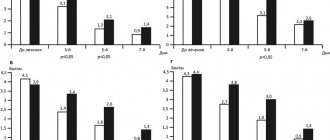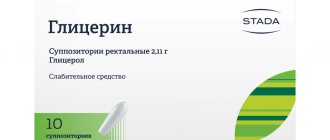Conjunctivitis is an inflammation of the thin mucous membrane covering the eyeball and the adjacent surfaces of the eyelids. This connective membrane, or conjunctiva, is normally transparent and colorless; it serves to moisten the cornea with a liquid mucous secretion, which is produced by the own glands of the conjunctiva in addition to the secretion of the main lacrimal glands. The conjunctiva receives nutrition from blood circulation in a network of small, almost invisible vessels, closely connected with the blood supply system of the eyelids. Inflammatory processes in this important structural element of the visual system manifest themselves as symptoms common to all conjunctivitis, due to the anatomical structure of the conjunctiva (redness of the eyes due to swelling and blood filling of the vascular network, characteristic turbidity, discomfort in the eye, increased lacrimation), and specific, due to cause and source of inflammation (presence/absence of purulent exudate, itching or pain, photophobia or swelling of the eyelids, etc.). Finally, some forms of conjunctivitis, for example, chlamydial in the early stages, can be practically asymptomatic for a long time.
Fig. 1 Preparations in the form of eye drops and ointments are the main method of treating conjunctivitis
The nature and pathogenic properties of the damaging factor, as well as the type of conjunctivitis (acute or chronic), determine the therapeutic approach. Thus, along with the elimination of general symptoms (anti-inflammatory, desensitizing, and, if indicated, moisturizing drugs) for conjunctivitis, etiopathogenetic measures should always be taken to eliminate the causes of inflammation. Therefore, the primary task of an ophthalmologist is usually to study the medical history, differentiate between various suspected types of conjunctivitis, and clarify diagnostics (for example, bacterial culture or serological testing to accurately identify the causative agent of the infectious-inflammatory process).
Thus, the clinical picture, the most likely dynamics of development, and the response therapeutic strategy depend on the etiological causes of conjunctivitis. In addition, the etiological criterion underlies the generally accepted typological classification of conjunctivitis. So, below are the most common types of conjunctivitis and the most effective means of treating it today. It should be emphasized that this information is provided for informational purposes only and can in no way be used as recommendations for self-medication.
Fig. 2 Antibacterial drops - a mandatory component of treatment
How to treat conjunctivitis.
August 17, 2022
15582
5
1
Content
- Symptoms of conjunctivitis
- Types of conjunctivitis
- How to treat conjunctivitis
- The most effective drops for conjunctivitis
- Ciprofloxacin-Optic
- Montevisin
- Levomycetin
- Opatanol
- Oftalmoferon
- Aktipol
- Drops for conjunctivitis for children
- Tsiprolet
- Diclofenac
- Vitabact
- Visine Classic
Conjunctivitis
is a common eye disease in which the mucous membrane of the eyeball, the inside of the eyelids and the sclera (the “white” of the eye) become inflamed.
Conjunctivitis usually does not pose a health risk and can go away on its own without treatment, but there are forms of conjunctivitis that cause complications or are contagious.
Types of conjunctivitis
There are two main forms
conjunctivitis: infectious and allergic.
- Infectious conjunctivitis
(viral, bacterial, fungal or chlamydial). - Allergic conjunctivitis
(develops as an allergic reaction to various types of irritants).
In addition, conjunctivitis can be acute and chronic.
Causes of conjunctivitis
Photos from open sources
Cause of bacterial conjunctivitis
usually become streptococcal and staphylococcal bacteria. With this type of conjunctivitis, pus is released from the eyes.
Viral conjunctivitis
develop due to adenoviruses, herpes virus, etc. With viral conjunctivitis, the mucous membrane of the eye is irritated, there is redness, and lacrimation. Often a person has a fever, general weakness, headache, cough, runny nose.
Allergic conjunctivitis
occur due to contact with an allergen (plant, house dust, animal hair, certain products, household chemicals, cosmetics, etc.). In addition to the above symptoms, allergic conjunctivitis is accompanied by severe itching of the eyes.
Causes of blepharitis of the eyelids
Various factors can cause inflammation. The main one is Staphylococcus aureus, which gets into the hair follicles of the eyelashes. Today, from 25 to 40% of people in the world are its carriers.
Staphylococcus is present in the mucous membranes of the upper respiratory tract, as well as on the epidermis. Staphylococcal infection causes a wide range of diseases in humans, from skin infections to deadly meningitis, pneumonia, and sepsis. You should not treat blepharitis as a mild eye ailment that will quickly go away if you apply eye drops. Treatment may take a long period, especially if it is started late. Other causes of the disease can be bacterial and viral infections, mites. Allergic blepharitis occurs when various cosmetics, household liquids, and pollen from flowering plants come into contact with the mucous membrane of the eyes. Pet owners are also susceptible to demodectic blepharitis: it is caused by the Demodex mite that lives on the fur of their pets.
The cause of inflammation of the eyelids is visual impairment. Thus, blepharitis of the eyelids often occurs in people with farsightedness or astigmatism. The risk group includes people with general pathologies - diabetes, gastritis, cholecystitis, sinusitis, tonsillitis, etc. Weakened immunity, sensitive and dry organs of vision, chronic intoxication, vitamin deficiency can also cause the disease.
How to treat conjunctivitis
Treatment of conjunctivitis should be aimed at eliminating the causes that caused it. And the causes of the disease can be determined by an ophthalmologist.
For bacterial
form, you need to wash your eyes with saline solution, plus the doctor prescribes drops for conjunctivitis.
Viral
conjunctivitis is usually not treated (like colds), since there are no special antiviral drugs for this disease - the person recovers on his own.
If necessary, treatment is reduced to symptomatic therapy to reduce negative symptoms (artificial tears, cool compresses). Allergic
conjunctivitis involves eliminating the causes of allergies.
Basic rules of hygiene when treating conjunctivitis:
- If you wear contact lenses, remove them until you recover;
- do not touch your eyes with your hands;
- wash your hands frequently and thoroughly;
- exclude close contact with others;
- during illness you should have your own soap and towel, change pillowcases and bed linen as often as possible;
- with conjunctivitis, women need to give up eye cosmetics;
- Ventilate the room you are in more often.
Antiviral eye drops
Antibacterial drugs, even if they have antiseptic properties, cannot cope with viruses. Antiviral agents are used for this. Bacteria are destroyed by other microorganisms contained in antibacterial agents. To defeat the virus, it is necessary to activate all the body's resources. Antiviral drops enhance the production of interferon, a protein that helps cope with the virus. It penetrates directly into the cell in which it is located, but does not destroy it, but forces the cell itself to resist the viral attack.
It is important to start taking antiviral drugs as soon as signs of an ophthalmic disease appear.
In the absence of adequate treatment, a bacterial infection may join the inflammatory process. Then the treatment will be delayed. You will also have to select antibacterial drops.
The most common antiviral drugs for instillation into the eyes are Grippferon, Nazoferon and Genferon. They are suitable for adults. Children are prescribed "Oftalmoferon", "Oftan Idu", "Gludantan".
Ciprofloxacin-Optic
Ciprofloxacin-Optic drops are an inexpensive broad-spectrum antibiotic that copes well with purulent conjunctivitis. These eye drops are odorless and come in a glass bottle. Dosing the drug is very convenient thanks to the narrow spout-tip. Literally a day after using Ciprofloxacin, pus stops coming out of the eyes, and after three days of treatment, conjunctivitis completely disappears. Eye drops do not “harm” the eyes, and patients note a rapid recovery: swelling of the eyelids, inflammation and burning in the eyes disappear. If you want to quickly cure conjunctivitis, use Ciprofloxacin drops, strictly following the instructions.
Ciprofloxacin-Optic
OJSC Pharmstandard-Leksredstva, Russia
Treatment of corneal ulcers and infections of the anterior segment of the eyeball and its appendages caused by bacteria sensitive to ciprofloxacin in adults, newborns (from 0 to 27 days), infants and infants (from 28 to 23 months), children (from 2 to 11 years) and teenagers (from 12 to 18 years old).
from 44
219
- Like
- Write a review
Montevisin
Eye drops for conjunctivitis "Montevisin" are excellent value for money. This is a kind of “first aid” for conjunctivitis, when you need to quickly get rid of symptoms. Drops instantly relieve eye fatigue, pain, pain, swelling and redness. A few minutes after instillation, the vascular network is no longer so visible, the view becomes clearer. But Montevisin has a number of contraindications associated with high blood pressure and heart disease, so be sure to consult your doctor. Thanks to the convenient pipette, it is very convenient to use Montevisin eye drops.
Montevisin
Swelling of the conjunctiva, secondary hyperemia in allergic eye diseases, irritation of the conjunctiva;
- hyperemia and/or swelling of the conjunctiva caused by various nonspecific causes (condition after tonometry, dust, cigarette smoke, smog, swimming, reading, driving). from 132
370
- Like
- Write a review
Symptoms of blepharitis
The development of the disease is characterized by the following clinical manifestations:
- thickening and redness of the ciliary edge of the eyelids;
- severe itching and irritation in the eyes;
- increased sensitivity to light;
- sticky discharge that sticks together eyelashes;
- the appearance of scales and crusts;
- eyelash loss;
- eye fatigue even with low visual load.
The listed symptoms are characteristic of many types of blepharitis. For effective therapy, you must strictly adhere to the doctor’s recommendations, maintain personal hygiene and the prescribed treatment regimen.
Levomycetin
Drops for conjunctivitis "Levomycetin" are prescribed to both adults and children. This drug treats bacterial conjunctivitis, blepharitis and blepharoconjunctivitis, keratitis and keratoconjunctivitis, and secondary bacterial infections. Once on the eyeball, these drops destroy pathogenic microflora and unpleasant symptoms; eye inflammation goes away within a few days. Ophthalmologists recommend dripping Levomycetin into your eyes every 2-3 hours for a week or more (it all depends on the specific case). The active ingredient of Levomycetin is chloramphenicol, which destroys bacteria on the mucous membrane of the eye. Levomycetin drops effectively fight staphylococci, salmonella, gonococci, spirochetes and other harmful microorganisms. Conjunctivitis can be treated with Levomycetin drops for children over 3 years old. Please note the short shelf life of the drops after opening the bottle, as well as the list of side effects.
Levomycetin
Slavyanskaya Pharmacy, Russia; Lecco FF ZAO, Russia; PJSC "Biopharma", Ukraine
A drug for the prevention and treatment of infectious eye diseases: conjunctivitis, blepharitis, keratitis.
from 7
985
- Like
- Write a review
Opatanol
Drops for conjunctivitis "Opatanol" produced in Belgium are used for the allergic nature of the disease. "Opatanol" is intended for adults and children over 3 years old. These drops are also suitable for pregnant women. To treat allergic conjunctivitis, you need to use these eye drops 2 times a day, but do not forget to shake the bottle before each drop. Opatanol is well tolerated and has almost no side effects. The active substance of the drug is olopatadine hydrochloride, which triggers anti-allergenic mechanisms.
Opatanol
Alkon, Switzerland
Opatanol - decongestant and antiallergic eye drops for use in ophthalmology.
from 352
489
- Like
- Write a review
Use during pregnancy
Since all of the eye drops listed above are antibiotics, there are some restrictions on their use by pregnant women, as well as during breastfeeding.
- Drops containing ofloxacin (Floxal, Dancil) can be used during pregnancy, but are prohibited during lactation, as the antibiotic negatively affects the development of the child.
- Ciprofloxacin (Tsipromed, Tsiprolet), as well as drugs containing tobramycin, are prohibited for use by both pregnant and nursing mothers.
- The use of drops Normax, Vigamox, Levomycetin, levofloxacin preparations is possible during pregnancy, but only under the supervision of the attending physician. Prohibited during breastfeeding.
- During pregnancy and lactation, only Fucithalmic and Sulfacyl sodium can be used, since they do not affect the development of the fetus, and even if they pass into breast milk, they do not affect the development and health of the child.
Oftalmoferon
“Ophthalmoferon” for conjunctivitis is a drug that not all doctors have a positive attitude towards, indicating that it does not have a sufficient evidence base. The manufacturer positions these antiviral eye drops as the most powerful in the fight against conjunctivitis. "Ophthalmoferon" is suitable for adults and children, and is indicated during pregnancy. Eye drops destroy bacteria in the conjunctiva, on the membrane of the eye, and on the mucous membrane of the eyelids. Some ophthalmologists prescribe these drops to prevent viral eye diseases. The active substance of the product - interferon - relieves inflammation, stimulates the immune system, and kills viruses. "Ophthalmoferon" also contains acid with diphenhydramine, which works as an antiseptic. All components of these drops for conjunctivitis are safe for the body and are not absorbed into the blood. Remember that after opening the bottle, Oftalmoferon drops must be stored in the refrigerator.
Oftalmoferon
Firn M, Russia
adenoviral, hemorrhagic (enteroviral), herpetic conjunctivitis;
adenoviral, herpetic (vesicular, punctate, tree-like, map-shaped) keratitis; herpetic stromal keratitis with and without corneal ulceration; adenoviral and herpetic keratoconjunctivitis; herpetic uveitis and herpetic keratouveitis (with and without ulceration); dry eye syndrome; prevention of graft disease and prevention of relapse of herpetic keratitis after keratoplasty; prevention and treatment of complications after excimer laser refractive surgery of the cornea. from 232
674
- Like
- Write a review
In what cases are they used?
Know! This group of ophthalmic solutions is used for any diseases caused by bacteria. Such pathologies include:
- conjunctivitis;
- dacryocystitis;
- keratitis;
- barley;
- blepharitis;
- ulceration of the cornea of an infectious nature.
Such drugs are effective both in the treatment of acute pathologies and chronic diseases .
Antibacterial solutions are often prescribed as part of rehabilitation therapy after operations to prevent the development of associated infectious lesions.
Aktipol
Actipol drops for conjunctivitis are suitable for advanced stages of the disease. "Aktipol" not only treats conjunctivitis, but also strengthens local immunity. Often these eye drops are prescribed for ARVI and herpes. "Aktipol" also helps relieve inflammation in case of minor eye bruises and damage to the mucous membrane in those who wear lenses. You need to drip Actipol into your eyes 3 to 8 times a day. The drug helps to completely cure conjunctivitis in a week or two. The main active ingredient of these eye drops is para-aminobenzoic acid, which strengthens local immunity, thanks to which the body independently resists viruses. "Aktipol" can be used by pregnant women in the second and third trimester.
Aktipol
Diapharm, Russia
Actipol is an ophthalmic antiviral agent that is an inducer of endogenous interferon.
In addition to the antiviral effect, it has antioxidant and regenerative properties. from 232
534
- Like
- Write a review
Reviews
“ When treating my chronic conjunctivitis, I am always inclined to believe that it is necessary to use only effective remedies that will not only eliminate the symptoms, but also eliminate the cause.
Therefore, I don’t see the point in using any lotions and decoctions, but I immediately buy tsipromed at the nearest pharmacy .
A few years ago I found out that this medicine does not cause me any pain, and the conjunctivitis goes away after 5-6 days .”
Igor Trofimov, Shakhtinsk.
“ I use antibacterial drugs myself and instill them in my children as soon as someone in the family catches conjunctivitis or similar diseases .
Tsiprolet
Tsiprolet eye drops are inexpensive (compared to analogues), but are very effective for childhood conjunctivitis. One bottle of this Indian drug is enough to completely get rid of conjunctivitis in a child. If you follow the instructions and apply drops to your child’s eyes every 5 hours for three days, the symptoms of conjunctivitis will completely go away. "Tsiprolet" can be used in children from 1 year of age. The duration of treatment for conjunctivitis is no more than 1 week. “Tsiprolet” perfectly relieves inflammation of the eyes, it is sold in a convenient package, but it stings a little, so take this point into account.
Tsiprolet
Dr. Reddy's Laboratories, India
Tsiprolet eye drops are an aqueous solution of ciprofloxacin for topical use in ophthalmology.
The drug belongs to antimicrobial drugs from the fluoroquinolone group, exhibits a bactericidal effect against most gram-negative and gram-positive bacteria, and is used to treat bacterial eye diseases (conjunctivitis, keratitis), including those caused by microorganisms resistant to other groups of antibiotics. from 45
1007
- Like
- Write a review
List of antibiotic eye drops
As of 2022, 9 antibiotics used in ophthalmology, produced in the form of eye drops, are registered in the Russian Federation. Almost all antibiotic eye drops have a wide spectrum of action, with the exception of phycythalmic, which primarily affects staphylococcal and streptococcal flora.
Ofloxacin
This is an antibiotic that belongs to the 2nd generation of the fluoroquinolone group. This substance inactivates the division of microorganisms, breaks DNA strands, causes changes in the cytoplasm of cells, which leads to their death. Ofloxacin has a wide spectrum of activity, even in cases where there is multiple resistance to other antibiotics and sulfonamides. It has a detrimental effect on the following types of bacteria:
- Group of “intestinal” pathogenic and opportunistic microflora: Escherichia coli, Salmonella, Protea, Morganella, Shigella, Citrobacter, Enterobacter, Yersinia, etc.
- Other microorganisms: legionella, neisseria, mycoplasma, chlamydia, staphylococcus and streptococcus.
In pharmacy chains, ofloxacin is sold in the form of two eye drops:
- Dancil (Sentisse, India) is a 0.3% antibiotic solution, which is used not only in ophthalmology, but also in the treatment of otitis media. The cost of the drug is low - only 115 rubles.
- Floxal (Gerhard Mann, Germany) is one of the most popular antibiotic eye drops, costing 150 rubles.
Ciprofloxacin
Ciprofloxacin is an antibiotic that also belongs to the group of fluoroquinolones and has a wide spectrum of action against pathogenic microflora. The mechanism of action of the substance is based on lysis (destruction) of the bacterial cell wall, due to which the bacterium dies.
Ciprofloxacin is available in the form of eye drops: Cipromed (Sentisse, India), the price of which is 90 rubles; Tsiprolet (Dr. Reddy, India) costs only 50 rubles.
Norfloxacin
Norfloxacin drops are an antibiotic belonging to the 2nd generation of fluoroquinolones, and like other representatives of this group, they affect a large number of pathogenic bacteria. Unlike ciprofloxacin and ofloxacin, norfloxacin has high activity against Staphylococcus aureus and Staphylococcus epidermidis, fecal enterococcus, which most often (85-90% of cases) cause acute purulent pathologies of the eyeball (conjunctivitis, keratitis, dacryocystitis).
Norfloxacin is available in the form of Normax eye drops (Ipka, India), and costs about 160 rubles in pharmacies. There are no analogues of this drug in Russia yet.
Moxifloxacin
Moxifloxacin is one of the newest antibacterial agents, which belongs to the 4th generation fluoroquinolones. Moxifloxacin blocks bacterial enzymes, preventing their division, and also has a detrimental effect on the cell wall. Since drugs based on this substance have appeared recently, resistance to it is extremely rare.
Moxifloxacin is produced in the form of eye drops: Vigamox 0.3% (Alkon, Belgium) - eye drops with an antibiotic costing 230 rubles; Maxiflox (Rompharm, Romania) - 0.5% solution of moxifloxacin, less popular than Vigamox, but costs only 160 rubles.
Gatifloxacin
Gatifloxacin is one of the most effective, but less popular antibiotics, which is associated with pronounced side effects when taken orally (because of this, it is banned in a number of countries, for example in India). When used in ophthalmology, there are practically no side effects. It belongs to the 4th generation fluoroquinolones, like moxifloxacin.
Gatifloxacin is produced in the form of 0.3% eye drops by Allergan (USA) under the trade name Zymar. This drug is quite expensive - its price in Russian pharmacies is approximately 500 rubles.
Levofloxacin
This antibiotic belongs to the fluoroquinolones and is a synthetic modification of ofloxacin. Due to this, microbial resistance to it is less likely, it is more effective against the most common bacteria, and the risk of developing side effects is reduced.
Levofloxacin is produced in the form of eye drops by many pharmaceutical companies under different trade names: Signicef 0.5% (Sentisse, India) is one of the most popular antibacterial drugs among Russian ophthalmologists, the price of which is 170 rubles. L-Optic (Rompharm, Romania) is a well-known and inexpensive drug, price 135 rubles. Oftaquix (Santen, Finland) is a less popular drug, probably due to the price of 210 rubles.
Sulfacetamide
Sulfacetamide eye drops are one of the cheapest and best-known drugs in Russia, better known under the names Albucid or sodium sulfacyl. In the last decade, due to the uncontrolled (often many years) use of these drops, especially among the elderly, resistance to it has been observed in almost 70% of subjects. On the contrary, in young people and children, even in cases where there is resistance to Normax, Vigamox, Signicef, simple Albucid can show very high effectiveness.
Tobramycin
This antibiotic is a representative of aminoglycosides. It has a detrimental effect on the microbial cell wall, disrupting its permeability, thereby exerting a bactericidal effect. It is effective mainly against staphylococcal and streptococcal flora, which are the main causative agents of eye infections.
It is also active against Escherichia, Proteus and Pseudomonas. Due to its easy tolerability and rare side effects, tobramycin has found wide use in pediatric ophthalmological practice. Available in the form of eye drops under the following trade names: Tobriss 0.3% (Sentiss, India) - a drug that is gaining popularity in the middle price category (160 rubles). Tobrex 0.3% (Alkon, Belgium) is a frequently prescribed drug from the world's leading company in the supply of ophthalmic drugs. The cost of the drug is only 170 rubles.
{banner_horizontalnyy2}
Fusidic acid
This antibiotic belongs to a special group of antibacterial substances - fusidines. Their mechanism of action is based on disruption of protein synthesis inside the bacterium, which inhibits their division and subsequently leads to the death of the microorganism due to energy starvation.
Fusidic acid does not have a wide spectrum of action, and is aimed primarily at the destruction of Staphylococcus aureus, streptococcus pneumoniae and Haemophilus influenzae.
Fusidic acid is available only under the trade name Fucithalmic 1% (Leo Labarothoris, Ireland). These eye drops have a viscous structure, due to which the drug is released gradually and over a long period of time, over 12 hours. At the moment, the drug has not found widespread use, despite its high efficiency and relatively low cost (280 rubles).
Chloramphenicol
Like albucid, chloramphenicol is one of the most popular drugs used in ophthalmology. Almost everyone knows the only drug whose active substance is chloramphenicol - Levomycetin eye drops 0.25%. Due to long-term use, dating back to the times of the USSR, bacterial resistance to this drug is often observed. But, despite this, it still does not lose its relevance and is often prescribed by doctors, which is primarily due to its very low price - only 9-15 rubles per bottle, as well as a wide spectrum of action on the main types of pathogenic microorganisms.
Levomycetin is often prescribed in cases where long-term use of antibiotics is not required: for the prevention of complications with corneal erosions for 3-5 days, with residual effects of acute conjunctivitis, after opening barley.
Diclofenac
Diclofenac eye drops relieve inflammation in conjunctivitis and are prescribed after injuries and eye surgeries to reduce pain. The active ingredient of the drug is diclofenac sodium, which, due to its rapid absorption into the blood, instantly relieves unpleasant symptoms. Use Diclofenac drops strictly according to the instructions, since the drug has contraindications and side effects (allergies, itching, swelling, nausea and vomiting). An opened bottle of Diclofenac can be stored for a month.
Diclofenac drops
Sintez OJSC, Russia
Has anti-inflammatory and analgesic effects.
In inflammatory processes that occur after operations, it relieves pain and reduces inflammatory swelling at the wound site. from 20
5.0 1 review
91
- Like
- Write a review
Vitabact
Vitabact eye drops produced in France are the safest broad-spectrum antimicrobial agent. Vitabact drops for conjunctivitis are indicated even for newborns. “Vitabakt” not only relieves eye inflammation and reduces purulent discharge, but also directly affects the causative agents of the disease. Judging by the reviews, these eye drops moisturize the eyes well, relieve mucous membrane irritation and discomfort. Among the disadvantages of Vitabact are the rather high price and short shelf life after opening the bottle (1 month). Parents say that these drops for conjunctivitis are well tolerated even by the youngest children because they do not cause a burning sensation.
Vitabact
Novartis Pharma Services AG (Novartis Pharma), Switzerland
Adults and children from 0 years: - bacterial infections of the anterior part of the eye;
- dacryocystitis; — prevention of infectious complications in the postoperative period after surgical interventions in the anterior eye area. from 156
567
- Like
- Write a review
The symptoms of these pathologies vary, but there are several common signs. These include:
- increased lacrimation;
- pain in the eyes, accompanied by itching, burning;
- redness of various eye structures, swelling;
- photophobia;
- purulent discharge from the eyes;
- blurred vision.
These symptoms are common to many bacterial infections. Only an ophthalmologist can determine what kind of disease has arisen and is developing. Based on an accurate diagnosis, appropriate medications are prescribed.
It is not recommended to resort to drops without examination and an accurate diagnosis. If the medicine is chosen incorrectly, it will, firstly, not bring any benefit, and secondly, it can lead to even greater complications.
Let's consider the most famous and effective eye drops prescribed for the treatment of eye diseases that have a bacterial etiology.
Visine Classic
These American-made eye drops are great for patients with allergic conjunctivitis. Literally 5-7 minutes after instillation, the condition of the eyes noticeably improves. The positive effect after Visin Classic lasts 4-8 hours. Visin Classic drops for conjunctivitis relieve inflammation, dry mucous membranes, swelling and redness if they are caused by wearing lenses, a reaction to dust and cosmetics, or chemical irritants. Visin Classic can be used in children from 2 years of age, but only if there are indications for this (inflammation and swelling). Allergic conjunctivitis with proper use of the drug goes away in 3-4 days.







